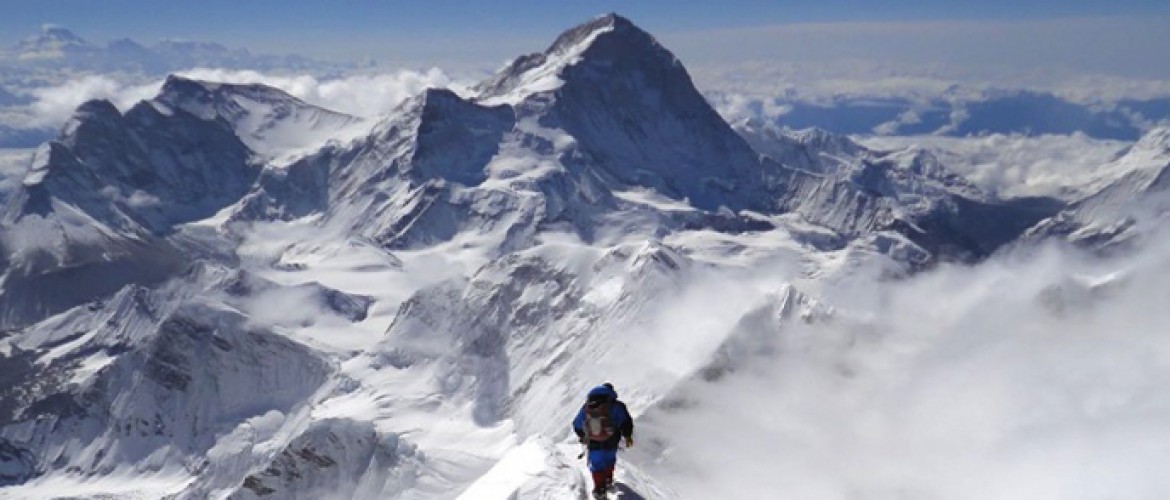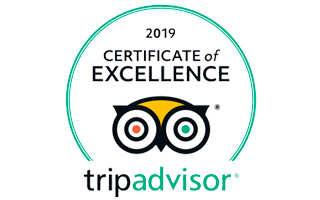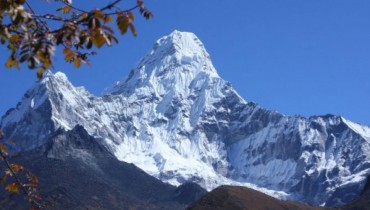Day 01: Arrival Kathmandu
Welcome to the land of Himalayas. An Amazing Nepal Trek and Expedition staff will receive you at the Tribhuvan International Airport and make arrangements for our transfer to the trip Hotel. A welcome program in the evening is accompanied by a briefing on the expedition outlines. Overnight stay at a hotel in Kathmandu.
Day 02-04: Expedition Preparation
For the next 3 days, we prepare for our expedition. The expedition organizer will arrange for your trekking gears and equipment. A briefing shall be provided on the climbing techniques with a preparation session. A guide will accompany you to the UNESCO World Heritage sites including (Pashupatinath, Swayambhunath, Boudhanath) Temples, Kathmandu Durbar Square, Patan Durbar Square, and Bhaktapur Durbar Square. On the final preparation day, we will visit the Ministry of Tourism, responsible for regulating mountaineering expeditions, where we shall be briefed on the guidelines. Overnight stays at a hotel in Kathmandu.
Day 05: Fly from Kathmandu to Tumlingtar|410m, Overnight at Tented camp.
We start our journey into the remote regions as we catch a flight heading for Tumlingtar. Enjoy this 40 min flight as we take off from Kathmandu with a view of this capital city, confined within hills surrounding the valley. Arriving at Tumlingtar airport, which sits pretty beside the Arun River, we can view the Mount Makalu (8463m), Tutse (6524m), and Chamlang (7321m) straight ahead. Overnight stay at Tumlingtar.
Day 06: Trek to Mane Bhanjyang|1100m, Overnight at Tented camp. 4-5 hrs
We initiate our trek on this day headed for Mane Bhanjyang via Khandbari. Starting the trek along a road, we turn onto a track taking us uphill past traditional lodges and farmed vegetation. After almost 11km of trail and treading it for more than two hours we’ll reach Khandbari. Heading up the ridge to the North, after a steady 30min walk we will arrive in Mane Bhanjyang village. Overnight stay at Mane Bhanjyang.
Day 07: Trek to Chichila|1980m, Overnight at Tented camp. 5-6 hrs
Starting along the hillside with an option of taking the road, we hike through the terraced fields and picturesque landscape. We arrive at Sekaha which is a small settlement of Gurung Community. Further along the bamboo grooves, we arrive at Bhotebas while being greeted by the prayer flags as we continue further. It will be two more hours before we arrive at our stop for the day Chichila. Overnight stay at Chichila.
Day 08: Trek to Num|1560m, Overnight at Tented camp. 5-6 hrs
We leave Chichila early in the morning accompanied by the breathtaking views of Mount Makalu (8463m) and Chamlang (7321m). Starting our ascent, we pass through the village of Baisake and Kuwapani along with Matsyapokhari as well as Deurali Bhanjyang as we head northeast to the village of Num. It will be a 6-hour trek to Num. Overnight stay at Num.
Day 09: Trek to Seduwa|1500m, Overnight at Tented camp. 5-6 hrs
Waking up in the lush greens of rural Nepal, you set out for the village of Seduwa. Descending from Num you set out on a steep trail to Lumbang along grooves of oak trees before crossing the Arun Koshi river on a suspension bridge. From here, the trail climbs steeply to Seduwa. Heading onto Seduwa we are greeted by a board welcoming us to the Makalu Barun National Park. Overnight stay at Seduwa.
Day 10: Trek to Tashi Gaon|2070m, Overnight at Tented camp. 4-5 hrs
The trail along Isuwa Khola and Kusuwa Khola will lead us to a village. As we cross the Isuwa Khola on a wooden bridge, we continue along a lush green forest. Finally, crossing another bridge we’ll arrive at Tashi Gaon. A Sherpa village this, enjoy the local delicacies as you spend your night among the folks of the Himalayas. Overnight stay at Tashi Gaon.
Day 11: Trek to Kauma|3560m, Overnight at Tented camp. 5-6 hrs
This will be a challenging day of the trek as you aim to gain more than 1500m in elevation and head for Kauma. The trail gets challenging as you climb up steeply passing by the stone masonry houses in Danda Kharka. Ascending along with the stone steps we head for the top of the ridge before descending and arriving at Kauma. Overnight stay at Kauma.
Day 12: Trek to Dobato, Overnight at Tented camp. 7-8 hrs
A challenging and exciting day, we’ll be climbing a steep terrain to some of the famous passes in this region namely Kauma La (3600m), Keke La (4127m), Shipton La (4170m), and Tutu La (4080m) before descending to Dobato. As we hit the steep trails early in the morning we hike uphill through the rhododendron forest to the Kauma La pass followed by Keke La Pass, and finally Shipton La pass. The trail then drops steeply to Dobato. Overnight stay at Dobato.
Day 13: Trek to Jark Kharka, Overnight at Tented camp. 5-6 hrs
With a clear view of the mountains, you start the trek. Descending downhill, you cross the rhododendron forest onto a trail along the Barun River. Taking this trail, we head upstream to Jark Kharka while crossing boulders and fissures. Venturing along the foothills of huge cliffs you arrive at Jark Kharka with a single lodge. Overnight stay at Jark Kharka.
Day 14: Trek to Hillary Basecamp, Overnight at Tented camp. 6-7 hrs
A short climb to Merek is followed by another to the Hillary Base Camp. Resting for a while in Merek, you venture into the arid barren lands with a hint of snow covering the landscape. The trail is fairly challenging and sometimes steep. Surrounded by peaks, most scaling above 6000m, the base camp sits pretty by the glacial moraines near the south face of Mount Makalu (8463m). Overnight stay at Hillary Base Camp.
Day 15: Trek to Makalu base camp, Overnight at Tented camp. 5-6 hrs
Setting out for the Makalu base camp (4870m), aka the Lower Basecamp, head east as you follow a decent trail along the Barun Glacial Moraine. As you arrive at the Makalu Base Camp, enjoy the incredible views of surrounding mountains, glaciers and lakes. We can venture to the Barun Pokhari which is a slight uphill climb. Overnight stay at Makalu Base Camp.
Day 16: Trek to Baruntse base camp, Overnight at Tented camp. 6-7 hrs
Today, you reach the foot of Mount Baruntse as you take on the terrain over a broad crevasse covered with boulders. This makes today's trek slightly challenging. Climbing along the rocky terrain, you'll feel the air thinning and the climb gets tough. Once you cross the Peak 41 (6648m) and Hunku (6833m) you’ll notice the Baruntse base camp (5450m) to your left. Overnight stay at Baruntse Base Camp.
Day 17-35: Climbing period, Overnight at Tented camp.
Base Camp (5450m) Located in a vast valley over the moraine of Hunku glacier, the base camp will be your campsite for the upcoming days. The base camp is by a beautiful lake. Heading towards the West Col you’ll need climbing aids and lines fixed by Sherpa guide to overcome the ice cliff.
Camp 0 (6000m) Having met your expedition leader along with the group of Sherpa who will lead you to the summit, you’ll spend a few days here while returning back to the Base Camp (5450m) on occasions. Use this time to acclimatize and practice your rope skills. Depending on the weather condition your team leader will formulate a plan for the summit.
Camp 1 (5700m): After you overcome the ice cliffs of West Col you’ll arrive at the glacial plateau which is Camp 1. While the Sherpa team fixes ropes along the slightly elevated southeast ridge of the Mountain, we will be climbing the ridge after them. Camp 1 is at an altitude of 5700m and as we reach a small col on the ridge proper the climb goes steeply at an angle of 45°.
Camp 2 (6420m) Beyond Camp 2, you take on a short climb steep at 45° onto an ice wall. This at 6500m where you’ll tread steps formed of ice along with granite outcrops which leads to the major test of the day as ice ledges appear. As you overcome this, crossing the 7000m mark, all which is left to conquer is the ridge to the summit. Once at the summit, enjoy the triumph with an awe-inspiring view of the Mt. Everest (8848m), Kanchenjunga (8586m), Makalu (8463m), Lhotse (8414m) among others.
Carefully descending down the same path with the help of fixed lines, you head back to Camp 2. The overall journey from Camp 2 to Summit and back will be around 10 hours. Stay at tented camp for the entire climbing period.
Day 36: Trek to Yak Kharka, Overnight at Tented camp. 6-7 hrs
Having completed the expedition of Baruntse and clearing up the base camp, we set out for Yak Kharka. We pass by the Makalu Base camp on our way. Trekking down we pass Shershon and reach Yak Kharka, we’ll be back amongst the civilization. We can observe the vegetation starting to reappear having spent the best part of 3 weeks in the Himalayas. Overnight stay at Yak Kharka.
Day 37: Trek to Mumbuk, Overnight at Tented camp. 5-6 hrs
Trekking further down, we head towards Mumbuk on this day. After heading down the rocky terrain we’ll be back amongst the lush greens as we traverse through the alpine forest descending along the Barun Valley. After a couple of hours of downhill trek, we end up crossing the Barun river and then onto Mumbuk. This quaint settlement in the midst of lush green hills offers breathtaking views of the Barun Valley. Overnight stay at Mumbuk.
Day 38: Trek to Tashi Gaon, Overnight at Tented camp. 6-7 hrs
Leaving Mumbuk, we set out for a long day of descent to Tashi Gaon. Having taken on the treacherous hike up to the passes, we take an alternative route that takes us by the Kauma Danda. The descent gets steeper after Kauma as we cut through hillside onto lush green forests as we finally enter Tashi Gaon. Enjoy the last night at this beautiful Sherpa village. Overnight stay at Tashi Gaon.
Day 39: Trek to Num, Overnight at Tented camp. 4-5 hrs
Descending further we head back to Num via Seduwa today. The trek starts with a tedious descent downhill before we cross the Isuwa Khola on a wooden bridge. Seduwa is our next stop and as we cross it we head on a steep trail further downhill along the Arun valley exiting the Makalu Barun National Park. Arriving at a suspension bridge we cross the Arun Koshi river and climb along lush green forest to Num village. Overnight stay at Num.
Day 40: Trek to Chichila, Overnight at Tented camp.
Tracing our trail back, we head southwest to Chichila. First, we climb along with narrow steps leading us to Mure after which we descend to the village of Kuwapani. Further, we hike up the trail as we cross Deurali Bhanjyang and descend to the village of Baisake before we arrive in Chichila. Overnight stay at Chichila.
Day 41: Trek to Tumlingtar, Overnight at Tented camp.
We can either hike to Tumlingtar or catch a jeep. The roads have been fairly built and this would be a comfortable way to end your trek. Trekking back is still on the cards as you head downhill with a perfect view of the Arun Valley. Crossing Mane Bhanjyang and Khandbari on the way, we finally arrive at Tumlingtar having traversed a trail along farmlands and forests. Overnight stay at Tumlingtar.
Day 42: Fly back to Kathmandu, Overnight at Hotel.
The final day of your expedition in remote Nepal, we'll catch a flight back to Kathmandu. Enjoy the views of the fascinating hilly terrain as you bid farewell to this region. Once in Kathmandu, and transferred to the hotel, enjoy the evening at your trip hotel. Treat yourself with a filling dinner as you venture out to celebrate your expedition. Overnight stay at a hotel in Kathmandu.
Day 43-44: Free day in Kathmandu, Overnight at Hotel.
The next couple of days will be free days for you to explore the Kathmandu Valley. Places of interest include the UNESCO World Heritage sites. You can also visit the tourist market in Thamel and get souvenirs for your loved ones. You can venture out to Nagarkot, a town Northeast of Kathmandu, for an exciting view of the Sunrise over the hills and views of Ganesh Himal among others.
On the final day, you are invited to a farewell dinner at a traditional Nepali restaurant where we shall share Mementos including those from the trip. Later in the evening, you can venture out into the Thamel market to experience the minimal nightlife Kathmandu has to offer. Overnight stays at a hotel in Kathmandu.
Day 45: Final departure
The final day of your trip, as the expedition comes to an end; one of our agents will see you off at the airport depending on your scheduled departure. Enjoy the lounge at the airport and make plans for the next trip back as you wait for your flight.
Not really satisfied with this itinerary ? Make your own
Customize It






